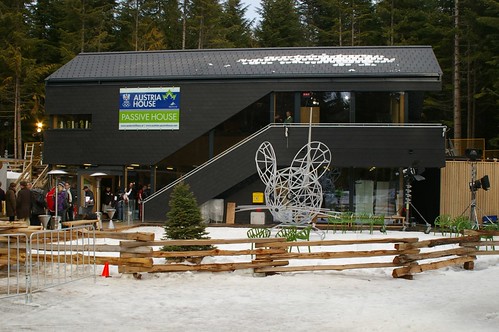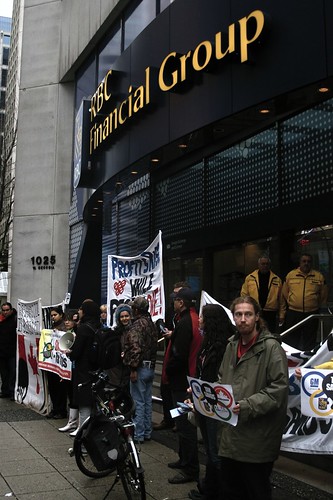The LEED buildings being used for the winter Olympics are often described as "leading edge."
LEED certification does mean that a building has a significantly better energy performance than the average North American building. But if one takes a global perspective this certification can hardly be described as "leading edge."
That label might be more accurately applied to the
Passivhaus standard that has been developed in Europe. There are over 20,000 of these buildings now in Europe and about 10 in the US. Canada's first PassivHaus recently opened in Whistler. It is currently being used by the Austrian Olympic team but will be turned over the Municipality of Whistler after the games. It is interesting that despite the rhetoric about sustainability from VANOC and the Province this project was initiated by other parties. In my mind it is one of the few truly sustainable elements associated with the 2010 Olympics.
I had an opportunity to tour it recently. Note that the information below is based on my hastily scribbled notes and I welcome corrections and additions.

Part of the core design of a Pasivhaus are walls, floors and ceilings that are supper insulated. There is also an attempt made to eliminate all thermal bridges. The Whistler Passivhaus walls and roof were built using prefabricated 10 cm thick solid wood panels that were also structural. On the outside of the wood panels was 36 cm of insulation for the roof and 30 cm for the walls. On the outside of the insulation was a breathable barrier, a venting space and then the cladding.
Since 40-60% of heat loss occurs through windows these are also important elements in the design. The windows used have U-value of 0.85 W/(m².K) or an imperial r-value of 7-7.5. Wood fiber insulation is used in the window frame. The windows provide twice the insulation value of a typical 3 pane window. Most of the glazing is on the south side, with some of the east and west and none facing north. The windows do have overhangs designed to provide some thermal shading in the summer.
The building is also very airtight. It scored 0.28 on a blower door test. Because it is so air tight the building uses a heat recovery ventilation (HRV) system.

Heating is provided by a ground source heat pump. The geo-exchange field is is only 100 m² and located on the south side of the building (for solar recharging). It contains 200 m of pipe in a buried in a horizontal loop 2 m deep. The heat pump itself is small - only 3 kW but has COP of 4.5. There is no backup or auxiliary heating for the heat pump.
Heat from the heat pump is delivered through in floor hydronics located in some sections of the floor. If need it can also be sent through the HRV. This heat pump also is used for domestic hot water.
Because the system is optimized for lower occupancy they are actually having to deal with over-heating during the winter games.

The 300 m² building is expected to use a total 35 kWh/m² of energy. Approximately 17 kWh/m² for heating and the rest for other electrical use. The costs were about $370 / m² but it is expected that future projects in the area will be around $300/m².
This infromation was compiled with the help of
Vancouver Renewable Energy and
Salal Permaculture. 





















